Input interpretation

2-vinylnaphthalene
Chemical names and formulas
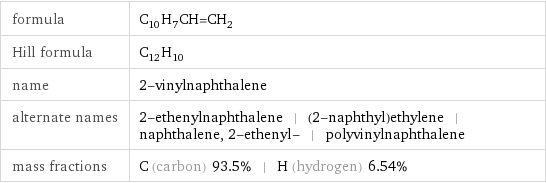
formula | C_10H_7CH=CH_2 Hill formula | C_12H_10 name | 2-vinylnaphthalene alternate names | 2-ethenylnaphthalene | (2-naphthyl)ethylene | naphthalene, 2-ethenyl- | polyvinylnaphthalene mass fractions | C (carbon) 93.5% | H (hydrogen) 6.54%
Lewis structure
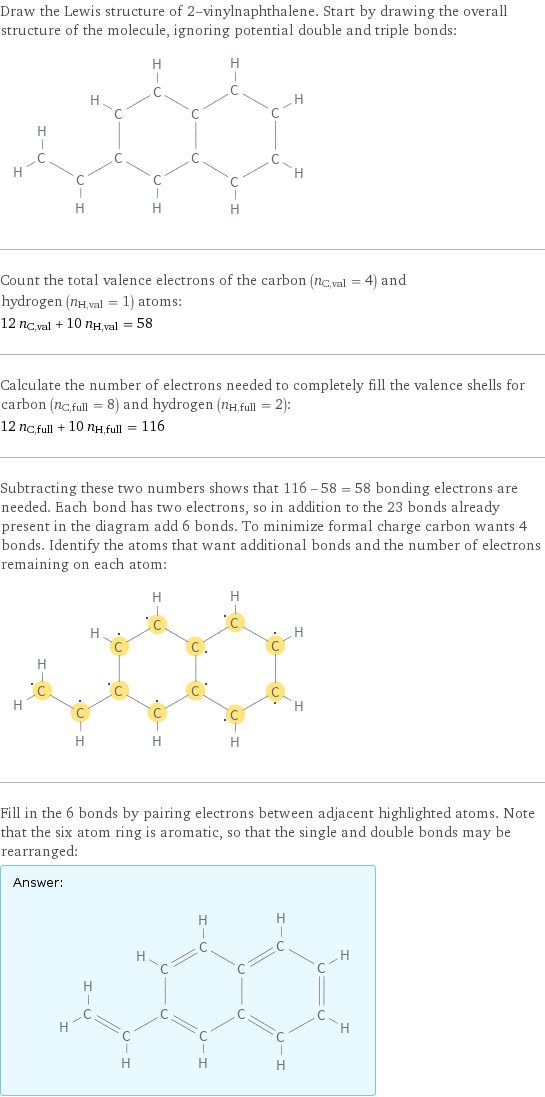
Draw the Lewis structure of 2-vinylnaphthalene. Start by drawing the overall structure of the molecule, ignoring potential double and triple bonds: Count the total valence electrons of the carbon (n_C, val = 4) and hydrogen (n_H, val = 1) atoms: 12 n_C, val + 10 n_H, val = 58 Calculate the number of electrons needed to completely fill the valence shells for carbon (n_C, full = 8) and hydrogen (n_H, full = 2): 12 n_C, full + 10 n_H, full = 116 Subtracting these two numbers shows that 116 - 58 = 58 bonding electrons are needed. Each bond has two electrons, so in addition to the 23 bonds already present in the diagram add 6 bonds. To minimize formal charge carbon wants 4 bonds. Identify the atoms that want additional bonds and the number of electrons remaining on each atom: Fill in the 6 bonds by pairing electrons between adjacent highlighted atoms. Note that the six atom ring is aromatic, so that the single and double bonds may be rearranged: Answer: | |
3D structure
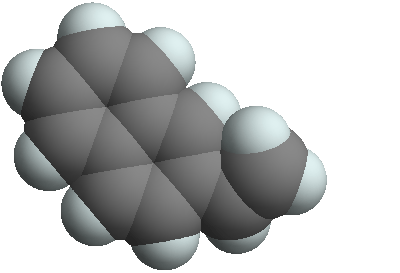
3D structure
Basic properties
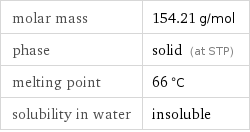
molar mass | 154.21 g/mol phase | solid (at STP) melting point | 66 °C solubility in water | insoluble
Units

Chemical identifiers
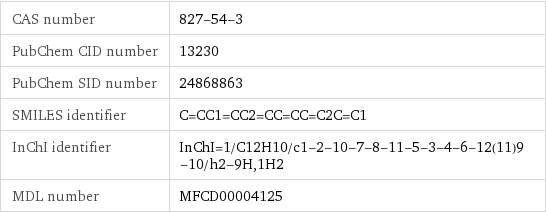
CAS number | 827-54-3 PubChem CID number | 13230 PubChem SID number | 24868863 SMILES identifier | C=CC1=CC2=CC=CC=C2C=C1 InChI identifier | InChI=1/C12H10/c1-2-10-7-8-11-5-3-4-6-12(11)9-10/h2-9H, 1H2 MDL number | MFCD00004125